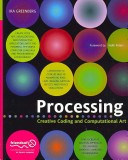Computational Beauty of Nature:Computer Explorations of Fractals, Chaos, Complex Systems, and AdaptationGary William Flake
MIT Press (
catalog)
Google
bookGoogle preview:
IntroductionReductionism is the idea that a system can be understood by examining its individual parts. (Implicit in this idea is that one may have to examine something at multiple levels.)
Traditional scientists study two types of phenomena: agents and interactions of agents.
1) 환원주의적 접근으로 해부하기
2) 보다 넓은 시야로 전체 집합을 이해하기
- 몇 개의 agents가 전체적인 패턴을 형성하는지 (예) 뇌세포:인간 지능)
3) 1과 2의 사이에서 agents 간의 상호작용을 연구하기
- The interactions of agents can be seen to form the glue that binds one level of understanding to the next level.
1.1 Simplicity and Complexityemergent의 예:
개미 굴/군집, 예측을 벗어나는 경제 시장, 척추동물의 패턴 인식 능력, 바이러스와 박테리아에 저항하는 인간의 면역 체계, 지구 생명체의 진화
=> 간단한 단위들로 이루어져 있는데 결합하면 전체적으로 복잡한 형상을 띤다.
=> 단지 부분들의 합으로는 설명할 수 없는 거대한 체계를 이룬다.
The whole of the system is greater than the sum of the parts(, which is a fair definition of holism -- the very opposite of reductionism).
Agents that exist on one level of understanding are very different from agents on another level. Yet the interactions on one level of understanding are often very similar to the interactions on other levels.
# 자기상사성 (self-similarity)
예) 생물 (나무, 양치식물, 나뭇잎, 나뭇가지), 무생물 (눈송이, 산맥, 구름)
상사12 (相似)
「명」「1」서로 모양이 비슷함. 「2」『생』종류가 다른 생물의 기관이 발생적으로 기원과 구조가 다르나 형상과 작용이 서로 일치하는 현상. 예를 들면, 새의 날개와 벌레의 날개 관계, 또는 잎이 변하여 된 완두콩의 덩굴손과 줄기가 변하여 된 포도 나무의 덩굴손 관계 따위이다. 「3」『수1』=닮음〔1〕.
「참」상동04(相同).
ref. 표준국어대사전
# 예측불능성 (unpredictability)
예) 주식 시장, 날씨
# 복잡성 complexity
예) 개미 군, 인간 뇌, 경제 시장
=> By self-organizing, complex behavior of collectives is much richer than the behavior of the individual component units.
# 적응력 (adaptation)
예) 진화, 학습, 적응 체계와 주변 환경과의 관계
Nature often uses the simplest.


 invalid-file
invalid-file